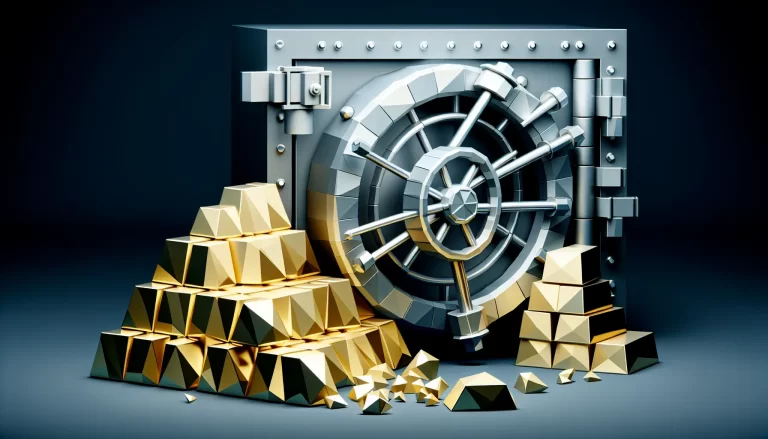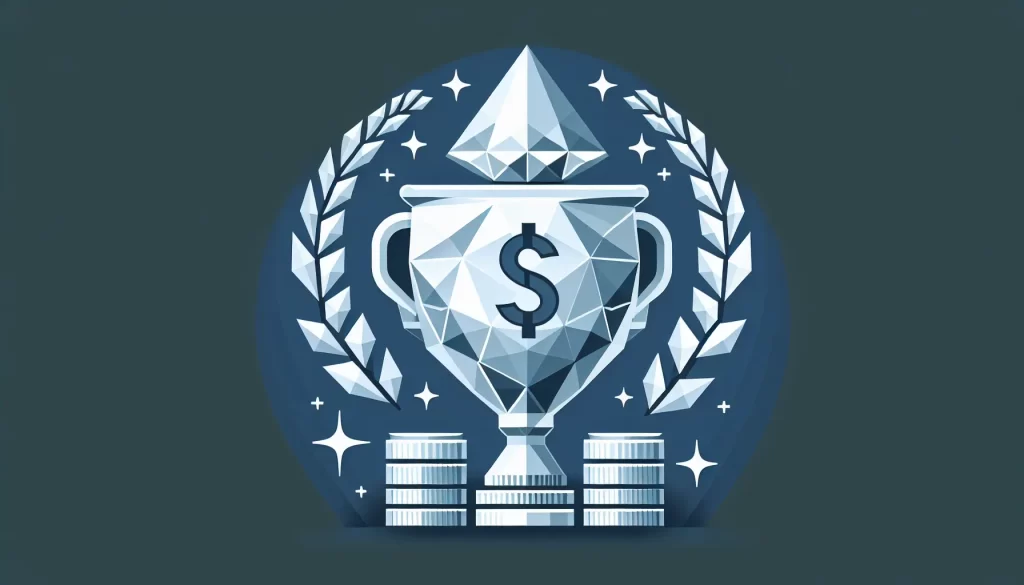When it comes to platinum, gold, palladium… you name it, investing in precious metal storage can be well worth the costs.
So in this article we are going to cover every aspect of storage from costs, location, to accessibility.
Please make use of the charts as well to speed up the reading.
Quick Disclaimer:
The content provided in this article is for informational purposes only and should not be considered financial or investment advice. Always consult with a qualified financial advisor before making any decisions regarding Precious Metals, Investing, or IRAs. Additionally, this article contains affiliate links, and I may earn a commission if you make a purchase through these links, at no additional cost to you.
Another question, I have been asked is, “What Gold IRA companies are the best” or “Which IRA companies are the most trusted?”.
If you’d like more information, below is a link to a comparison PDF by Augusta Precious Metals that could be useful. (It’s also free.)
Augusta Gold IRA Company Integrity Checklist
Why Invest in Precious Metals
Precious metals like gold, silver, platinum, and palladium have been trusted for centuries as a store of value.
Millions of Americans invest in these metals as a hedge against stock market downturns or inflation, making it a prudent way to diversify investment portfolios as of 2024 (Provident Metals).
Here are some key reasons to consider this investment:
- Diversification: Adding precious metals to your portfolio can help preserve wealth and provide more consistent returns, enhancing your financial security (AU Precious Metals).
- Direct Control: Investing in physical forms of precious metals, such as bars, coins, and jewelry, gives you direct access and control over your investments (AU Precious Metals).
- Tax Advantages: Certain investments, like U.S. government-issued coins and bullion, are exempt from sales tax in states like Michigan, offering additional financial benefits (AU Precious Metals).
- IRA Benefits: Investing in precious metals within an Individual Retirement Account (IRA) can provide diversification benefits and serve as a hedge against inflation and economic uncertainty.
Types of Precious Metals
Gold
Gold is perhaps the most well-known precious metal and is often considered a safe-haven asset.
It is widely used in jewelry and electronics, and it’s a popular choice for investing in physical gold.
Silver
Silver is another popular choice, known for its industrial applications as well as its use in jewelry and silverware.
It’s often viewed as more affordable compared to gold, making it an attractive option for investing in silver coins and other forms.
Platinum
Platinum is a rare metal with significant industrial applications, particularly in the automotive industry for catalytic converters.
Its rarity and industrial demand make it a valuable addition to any investment portfolio. Learn more about platinum investing.
Palladium
Palladium is another industrial metal, primarily used in electronics and automotive industries.
Its unique properties and increasing demand make it a compelling option for investors.
Discover more about palladium investing.
| Metal | Primary Uses | Investment Options |
|---|---|---|
| Gold | Jewelry, Electronics | Bars, Coins, Jewelry |
| Silver | Industrial, Jewelry | Coins, Bullion, Jewelry |
| Platinum | Automotive, Industrial | Bars, Coins |
| Palladium | Automotive, Electronics | Bars, Coins |
For more insights, visit our detailed guides on investing in precious metals and precious metals investing.

Storage Options for Precious Metals
When investing in precious metal storage, it’s crucial to consider the various storage options available.
Here, we’ll explore three primary methods: home storage, bank safety deposit boxes, and private depositories.
Home Storage
Storing your precious metals at home offers convenience and immediate accessibility.
However, it comes with its own set of risks and responsibilities.
Using a secure, well-hidden safe is recommended.
The safe should be water and fire-resistant, and you should organize your metals in protective cases to prevent damage.
Pros:
- Immediate access
- No ongoing storage fees
Cons:
- Risk of theft
- Potential for damage from natural disasters
- May negatively impact liquidity when selling (BOLD Precious Metals)
Bank Safety Deposit Boxes
Using a bank safety deposit box is a popular choice for storing precious metals.
Banks provide enhanced security against theft and environmental damage.
However, this option involves annual fees and limited access.
Pros:
- High security
- Protection from environmental damage
Cons:
- Annual fees: $200-$500
- Limited access during bank hours (BOLD Precious Metals)
Private Depositories
Private depositories offer top-tier security and comprehensive insurance options, which can alleviate the responsibility from you, the investor.
These facilities are specifically designed to store precious metals and provide additional services like auditing and reporting.
Pros:
- High security and insurance options
- Professional management and additional services
Cons:
- Limited access based on facility hours
- Storage fees vary by depository (BOLD Precious Metals)
| Storage Option | Security Level | Accessibility | Cost (Annual) |
|---|---|---|---|
| Home Storage | Moderate | Immediate | None |
| Bank Safety Deposit Boxes | High | Limited | $200-$500 |
| Private Depositories | Very High | Limited | Varies |
Each storage option has its own benefits and drawbacks.
For more on the legal and tax implications of storing precious metals, check out our section on Legal and Tax Considerations.
Costs of Storing Precious Metals
When investing in precious metals, understanding the associated costs of storage is essential.
Storage fees, withdrawal fees, and insurance costs can impact your overall investment. Let’s explore these expenses in detail.
Storage Fees
Storage fees are incurred when you choose to store your precious metals with a service provider.
These fees can vary depending on the type and amount of metal being stored.
It’s important to compare fees across different storage options to find the best fit for your needs.
| Type of Metal | Annual Storage Fee (per ounce) |
|---|---|
| Gold | $0.50 – $1.00 |
| Silver | $0.10 – $0.20 |
| Platinum | $0.75 – $1.25 |
| Palladium | $0.70 – $1.15 |
Source: Publish What You Pay
Withdrawal Fees
Withdrawal fees apply when you request to withdraw your precious metals from storage.
These fees cover administrative and logistical costs involved in retrieving and delivering your metals.
| Storage Option | Withdrawal Fee |
|---|---|
| Home Storage | $25 – $50 |
| Bank Safety Deposit Boxes | $50 – $100 |
| Private Depositories | $75 – $150 |
Source: Publish What You Pay
Insurance Costs
Insurance costs are a critical component of storing precious metals.
Comprehensive insurance coverage protects against potential loss, theft, or damage, providing financial compensation for any loss incurred.
Insurance policies can be tailored to your specific needs, offering specialized coverage for rare coins, bullion, and other forms of precious metals.
| Type of Metal | Annual Insurance Cost (per $1,000 value) |
|---|---|
| Gold | $1.00 – $2.00 |
| Silver | $0.50 – $1.00 |
| Platinum | $1.50 – $2.50 |
| Palladium | $1.25 – $2.00 |
Source: MGS Refining
When planning your investment, it’s essential to factor in these costs. For a deeper dive into precious metals investing, including tips on investing in physical gold and investing in silver coins, explore our other resources.
Digital Precious Metal Trading
How Digital Trading Works
Digital precious metal trading platforms enable you to buy and sell precious metals in a digital format.
This means you can own gold, silver, or platinum without having to physically store these assets. Here’s a step-by-step overview of how digital trading works:
- Account Setup: Create an account on a digital trading platform.
- Deposit Funds: Deposit funds into your account using various payment methods like bank transfer or credit card.
- Buy Precious Metals: Use the platform to purchase digital assets, which are backed by physical metals stored in secure vaults.
- Monitor Investments: Track your investments in real-time through the platform’s dashboard.
- Sell or Withdraw: Sell your digital assets for cash or request physical delivery of the metals, subject to withdrawal fees.
This method of trading provides the benefits of liquidity, ease of access, and the ability to quickly respond to market changes.
For more in-depth insights, visit our page on precious metals investing.
Comparing Platform Fees
When choosing a digital trading platform, it’s essential to compare fees and charges to ensure you’re getting the best value for your investments. Here are some key fees to consider:
- Trading Fees: These are costs incurred when buying or selling precious metals on the platform. They can be a flat fee or a percentage of the transaction value.
- Storage Fees: Since the digital assets are backed by physical metals stored in vaults, platforms charge a fee for storage.
- Withdrawal Fees: Imposed when you request to withdraw your precious metals from the platform. These fees cover administrative and logistical costs.
- Insurance Fees: Some platforms charge an additional fee for insurance coverage of your stored metals.
Here’s a table to help you understand the typical range of fees:
| Fee Type | Description | Typical Range |
|---|---|---|
| Trading Fees | Charged per transaction | 0.1% – 2% |
| Storage Fees | Annual fee based on asset value | 0.1% – 0.5% |
| Withdrawal Fees | Fee for physical delivery of metals | $50 – $150 per request |
| Insurance Fees | Annual fee for insurance coverage | 0.05% – 0.2% |
Figures courtesy Publish What You Pay
When evaluating platforms, consider factors like trading volume, holding period, and the type of precious metal to understand how these fees will impact your investments.
For more information on specific platforms and their fees, check out our guide on investing in precious metal portfolios.
For more tips on diversifying your investments, visit our page on investing in precious metal diversification.
Security Measures for Your Investments
Importance of Security
The security of your precious metals should be a top priority.
Secure private depositories provide superior protection compared to home safes or bank safety deposit boxes.
Home safes and safety deposit boxes are vulnerable to theft and natural disasters.
Utilizing a trusted security company to monitor the storage area can further enhance the safety of your precious metals and give you peace of mind (MGS Refining).
| Storage Option | Security Level | Vulnerability |
|---|---|---|
| Home Safe | Low | High (theft, fire, flooding) |
| Bank Safety Deposit Box | Medium | Medium (theft, limited access) |
| Private Depository | High | Low (24/7 monitoring, reinforced security) |
Insurance Coverage
Obtaining comprehensive insurance coverage for your precious metals is essential.
Insurance can protect against potential loss, theft, or damage and provide financial compensation if any loss or damage occurs.
Policies can be tailored to your specific needs, offering specialized coverage for rare coins, bullion, and other forms of precious metals, which may be a legal requirement for businesses dealing in these assets.
Secure private depositories typically have insurance policies that protect the metals stored within them, offering peace of mind for investors and allowing them to concentrate on their investment strategies.
Always check the insurance details provided by the depository to understand the extent of the coverage.
For further guidance on investing in precious metals and protecting your assets, explore our related articles on investing in bullion and precious metals investing.
Legal and Tax Considerations
When investing in precious metals, it’s essential to understand the legal and tax implications.
This knowledge can help you make informed decisions and maximize your investment.
Tax Implications
Gains from the sale of precious metals held for more than one year can be taxed at a maximum capital gains rate of 28%, which is higher than the typical long-term capital gains rate.
| Investment Type | Long-term Capital Gains Tax Rate |
|---|---|
| Physical Precious Metals | Up to 28% |
| Non-Physical Investments (ETFs) | Up to 20% |
- Long-term Gains: The tax rate for long-term capital gains on physical gold and silver investments is capped at 28%, regardless of your marginal tax rate.
- Short-term Gains: Short-term gains, for metals held less than a year, are taxed at ordinary income rates, which can be significantly higher.
- Non-Physical Investments: Non-physical investments in precious metals, such as ETFs, have a lower capital gains tax cap of 20% for long-term gains.
It’s crucial to consult with a tax professional to stay updated on tax laws and explore strategies to minimize tax liability related to your investments in precious metals.
For more on specific metals, check out our guides on gold investing and silver investing.
Compliance and Reporting
Compliance and reporting are key aspects of managing your precious metal investments.
The IRS requires you to report sales of precious metals, and you may need to submit Form 1099-B depending on the type of metal and the nature of the transaction (BlockApps).
- Form 1099-B: This form is necessary for certain transactions and must be reported to the IRS.
- Record Keeping: Maintain detailed records of all transactions, including purchase and sale dates, prices, and quantities. This will aid in accurate reporting and compliance.
For additional information on related topics, explore our articles on investing in precious metal IRAs and investing in bullion.



